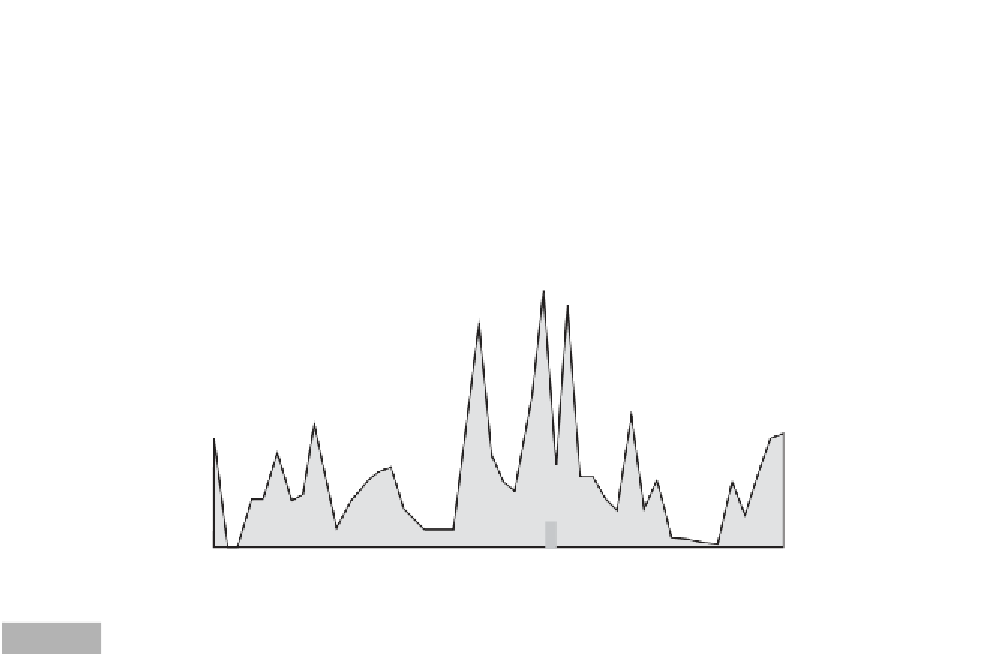Geoscience Reference
In-Depth Information
N. hemisphere temperature
0.6
0.0
-0.6
Tambora, Indonesia
Huaynaputina, Peru
5000
2.5
4000
2.0
Tree-rings
Krakatau
3000
1.5
2000
1.0
1000
Dust
0
0.5
1550
1600
1650
1700
1750
1800
1850
1900
1950
2000
Year
Recent volcanism (1600-2000) as determined by Lamb's Dust Veil Index and tree-ring density measurements. The top panel plots
northern hemisphere air temperature over the same time span (based on Gribbin, 1978; Lamb, 1985; and Jones et al., 1995).
Fig. 9.10
spondence between the Dust Veil Index and global
temperature is strong (
regression coefficient
of -0.65,
which is significant at the 0.01 level). Periods of
increased volcanism decrease surface air temperatures
and have had a marked impact on society. For instance,
volcanism in the 1780s produced extremely cold
winters and drought throughout western Europe and
Japan. In France, the adverse climatic events exacer-
bated the social conditions leading to the French Rev-
olution in 1789. In 1816, the dust and sulfate emissions
from the Tambora eruption, in the previous year,
produced temperature drops of 1°C in New England,
western South America, Europe, and the south-west
Pacific. In New England, the event was known as the
'year without a summer'. Frost occurred in every
month of the year in eastern North America, crops
failed in Wales and central Europe leading to famine,
and the South-East Asian monsoon was very intense.
In contrast, the summer was hot in the Mississippi
Valley, the Yukon, and north-western Russia. This
eruption, and a series of others, was conducive to
climatic conditions that favored the first global epi-
demics of typhus and cholera between 1816 and 1819.
there was not one significant dust-producing volcanic
eruption that affected the northern hemisphere climate
until Mt Agung in Bali in 1961. Mt Hekla, Iceland, in
1947 produced 100 000 m
3
s
-1
of ash, which reached as
far as Finland; however, the eruption was short-lived
and did not inject significant debris into the stratos-
phere. Mt Agung represented a mild reawakening of
activity worldwide, which did not become intense until
the Mt St Helens eruption. Besides Mt St Helens, there
have been major eruptions of Galunggung, western
Java, Indonesia, in April 1982; El Chichon in March
1982; Nevado del Ruiz, Colombia, in November 1985;
Augustine, Alaska, in 1986; and Pinatubo in June 1991.
Because of these eruptions, the Dust Veil Index
climbed above 2000 during the last two decades of the
twentieth century.
Also plotted in Figure 9.10 is the average tempera-
ture of the northern hemisphere, referenced to 1880.
Dust emissions have a significant impact on global
temperature 2-3 years after a major eruption. For
example, dust from the Krakatau, Indonesia, eruption
of 27 August 1883, reduced solar radiation in France
by 10-20 per cent over a three-year period. The corre-














































